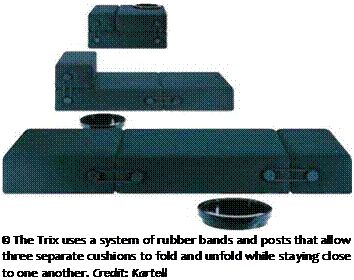 Trix is a set of connected cushions that folds open or shut, allowing it to become a chair, sofa, or bed—there’s even an integrated, removable, round tray. “Open one part, and then you transform it into a chair, move again and transform into an armchair, move again and transform into a bed,” says Lissoni. “The movement is really simple because we designed a link system using one huge ring in rubber. You are totally free and it is up to you to decide every movement. If you like to use a lounge chair, you design a lounge chair; if you like to use a daybed, you design a daybed.”
Trix is a set of connected cushions that folds open or shut, allowing it to become a chair, sofa, or bed—there’s even an integrated, removable, round tray. “Open one part, and then you transform it into a chair, move again and transform into an armchair, move again and transform into a bed,” says Lissoni. “The movement is really simple because we designed a link system using one huge ring in rubber. You are totally free and it is up to you to decide every movement. If you like to use a lounge chair, you design a lounge chair; if you like to use a daybed, you design a daybed.”
Its compact space and multiuse design make Trix especially appropriate in smaller living quarters. “Small spaces were in my mind,” says Lissoni. “I’m also thinking for children, thinking for a simple bedroom. Imagine putting one in a bedroom for children and if you have a friend, there is one possibility to play, one possibility to sleep. Or if you have a small house and you invite some friends over, you can offer the possibility to sleep.”
Several innovations make this versatility possible. The first is a contraption of rubber posts and bands that hold the cushions together, even as they allow them to be manipulated. “It’s a special rubber,” says Lissoni, “Like a huge О-ring, with rubber bands to keep pieces together. We are working with the resistance of the rubber around the resistance of the bottom to fix the cushions together. It’s completely without mechanism. If you move the different cushions, the rubber is like a connection —it’s my linking system.” And it is this system that makes so many configurations possible. “It’s not possible to divide, but it is possible to transform every moment,” says Lissoni. “With this simple idea, I leave the decision to move the cushions up to you. Everyone now is a designer. Everyone is now ready to design our pieces and their life.”
In addition, the Trix can be used indoors or out. Lissoni and the manufacturer, Kartell, designed and produced their own waterproof, polyester and nylon, elastic fabric that moves along with the cushions. “This fabric is like a huge net,” Lissoni says. “The surface is designed because of the movement of the fabric; we have to design one fabric without the normal tension inside. It’s in three dimensions. It’s very thick and deep. It’s like two nets connected—when you sit and move the fabric is completely elastic in all different directions. You don’t see the movement, you don’t see the effect,” he notes. “Trix is possible to put outside next to the swimming pool, outside on the terrace. The fabric is the real trick of the product.”

@ The Trix can be used as a chair, or a sofa, a lounger, or bed, and is especially useful in small, living spaces. Credit: Piero Lissoni
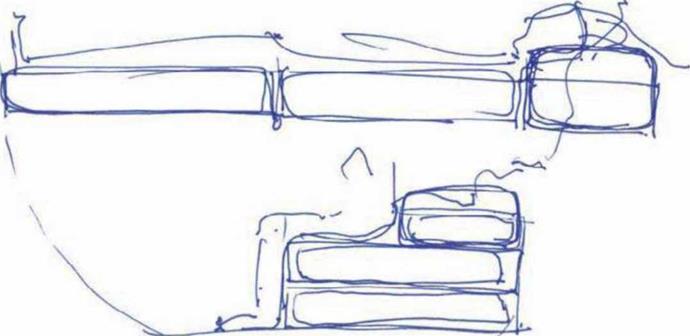
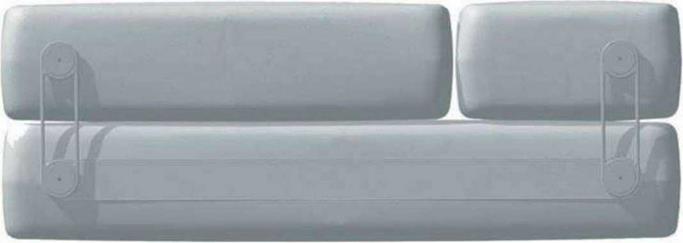 Q) A computer rendering reveals the simplicity of the Trix mechanism—the friction of the rubber bands against the rubber posts hold each piece in place, even as it allows them to be reconfigured. Credit: Lissoni Associati
Q) A computer rendering reveals the simplicity of the Trix mechanism—the friction of the rubber bands against the rubber posts hold each piece in place, even as it allows them to be reconfigured. Credit: Lissoni Associati
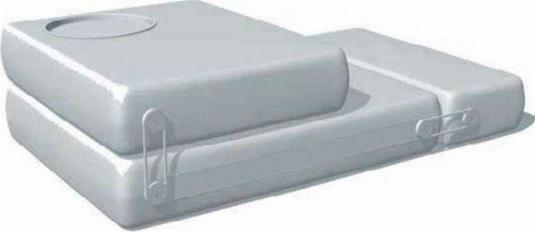
|
|||||||
|
|||||||
|
|||||||
|
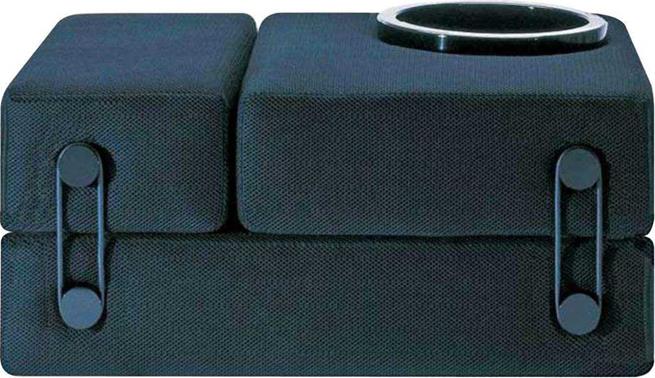
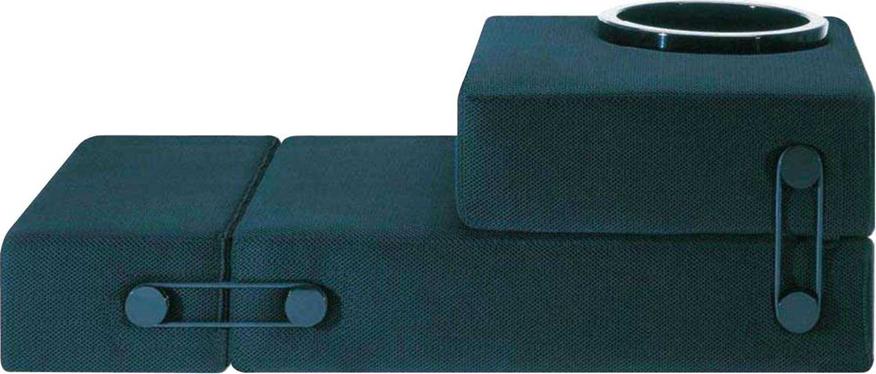
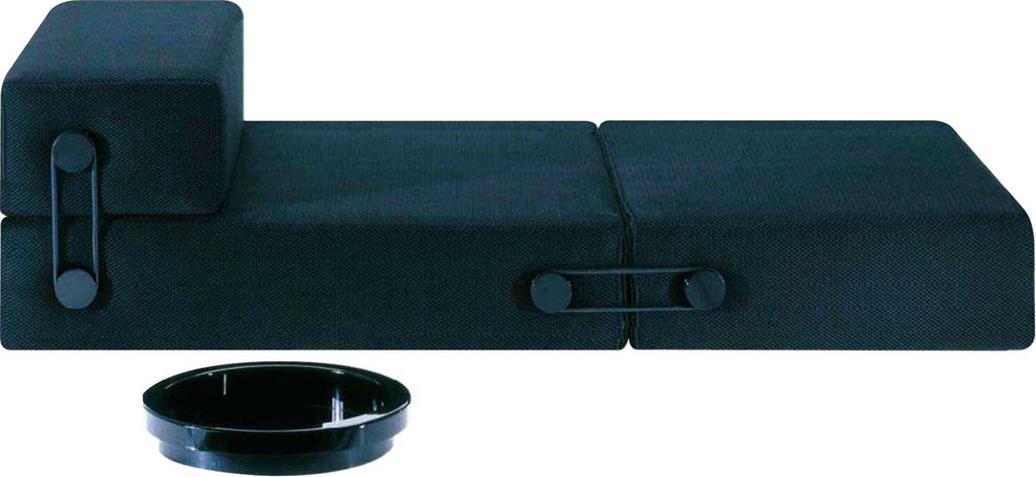
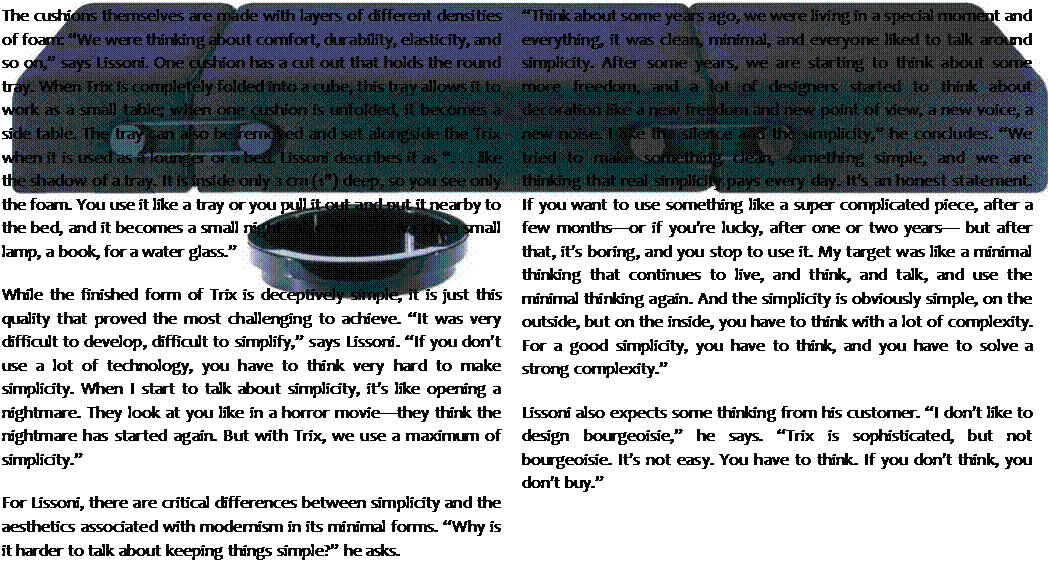 |
0 When completely unfolded, Trix becomes a bed with a mini, bedside table. Multiple densities of foam in the cushions ensure comfort. Credit: Kartell



